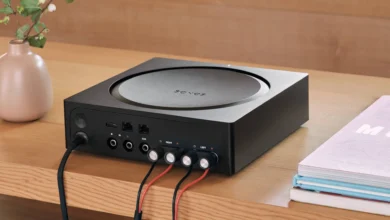Power Up: Everything You Need to Know About Charging Blocks

Charging Block In today’s digital age, where our lives revolve around smartphones, tablets, laptops, and other electronic gadgets, having a reliable and efficient charging solution is paramount. Enter the humble charging block, a small yet indispensable device that ensures our devices stay powered up throughout the day. In this comprehensive guide, we delve deep into the world of charging blocks, covering everything from their functionality and benefits to tips for choosing the right one and ensuring safe usage.
Understanding Charging Blocks
What Exactly is a Charging Block?
A charging block, also known as a wall charger or power adapter, is a device that converts AC power from an electrical outlet into DC power suitable for charging electronic devices. It typically consists of a plastic or metal casing with one or more USB ports for connecting charging cables.
Charging blocks come in various shapes, sizes, and configurations, catering to different devices and charging needs. From single-port chargers for smartphones to multi-port chargers for charging multiple devices simultaneously, there’s a charging block for every requirement.
Different Types of Charging Blocks
There are several types of charging blocks available on the market today, each with its own unique features and advantages. USB wall chargers are perhaps the most common type, featuring one or more USB ports for connecting charging cables. These chargers are versatile and can be used with a wide range of devices, including smartphones, tablets, and cameras.
Wireless charging pads are another popular option, especially for Qi-enabled devices like the latest smartphones and smartwatches. These pads use electromagnetic induction to transfer power to the device without the need for a physical connection.
Portable power banks, also known as external battery packs, are ideal for on-the-go charging. These compact devices store electrical energy and can be used to recharge smartphones, tablets, and other gadgets when away from an electrical outlet.
Choosing the Right Charging Block
Factors to Consider When Selecting a Charging Block
When it comes to choosing the right charging block, there are several factors to consider to ensure compatibility, efficiency, and safety.
Compatibility with Devices: It’s essential to choose a charging block that is compatible with your devices’ charging requirements. Check the voltage and amperage specifications of your devices and select a charger that can deliver the appropriate power output.
Power Output: The power output of a charging block is measured in watts and determines how quickly it can charge your devices. Higher wattage chargers can deliver faster charging speeds, but it’s essential to ensure that your devices can handle the increased power.
Portability: If you’re frequently on the go, consider the portability of the charging block. Opt for compact and lightweight chargers that are easy to carry in your bag or pocket.
Safety Features: Look for charging blocks that come with built-in safety features such as overcurrent protection, short circuit protection, and overheating protection. These features help prevent damage to your devices and ensure safe charging.
Popular Brands and Models: Research and compare different charging block brands and models to find one that meets your needs and budget. Some popular brands include Anker, Belkin, Aukey, and RAVPower, known for their quality and reliability.
Benefits of Using Charging Blocks
Convenience and Accessibility
One of the primary benefits of charging blocks is their convenience and accessibility. Whether you’re at home, in the office, or on the go, you can easily plug in your devices and keep them charged throughout the day. With multiple USB ports and wireless charging options, you can charge multiple devices simultaneously, eliminating the need for multiple chargers.
Versatility for Various Devices
Charging blocks are incredibly versatile and can be used with a wide range of devices, including smartphones, tablets, laptops, cameras, and more. Whether you’re charging your phone overnight or powering up your laptop during a long flight, a charging block provides a reliable and efficient charging solution.
Portability for On-the-Go Charging
For those who are constantly on the move, portable charging blocks are a lifesaver. These compact devices can easily fit in your pocket or bag and provide an extra boost of power when you need it most. Whether you’re traveling, camping, or attending a conference, a portable charging block ensures that you never run out of battery life.
Minimizing Cable Clutter
With the proliferation of electronic devices in our daily lives, cable clutter has become a common problem. Charging blocks help minimize cable clutter by providing a centralized charging solution for all your devices. Instead of having multiple charging cables scattered around your home or office, you can consolidate them into a single charging block, keeping your space neat and organized.
Common Features and Specifications
Power Output and Charging Speeds
The power output of a charging block is measured in watts and determines how quickly it can charge your devices. Higher wattage chargers can deliver faster charging speeds, but it’s essential to ensure that your devices can handle the increased power.
Number of Ports
Charging blocks come with varying numbers of USB ports, ranging from single-port chargers to multi-port chargers with four or more ports. The number of ports you need depends on how many devices you need to charge simultaneously.
Input Voltage and Current
The input voltage and current of a charging block determine its compatibility with different electrical systems. Most charging blocks support a wide range of input voltages, making them suitable for use in various countries and regions.
Smart Charging Technology
Many modern charging blocks come with smart charging technology, which automatically detects and adjusts the power output to optimize charging efficiency. This technology helps prevent overcharging, overheating, and other potential risks to your devices.
LED Indicators
Some charging blocks feature LED indicators that provide visual feedback on the charging status of your devices. These indicators may display the charging progress, battery level, or any error messages, making it easy to monitor the charging process.
Tips for Proper Usage and Maintenance
Properly Inserting and Removing Cables
When connecting charging cables to the charging block, be sure to insert them firmly into the USB ports to ensure a secure connection. Avoid yanking or pulling on the cables, as this can damage the ports or cables over time. When removing cables, grasp the connector and gently pull it out of the port.
Avoiding Overloading
While charging blocks are designed to handle multiple devices simultaneously, it’s essential not to overload them beyond their rated capacity. Check the power output and specifications of the charging block and ensure that the total power draw of your devices does not exceed this limit.
Keeping Charging Blocks Clean and Dust-Free
Regularly clean your charging blocks to remove dust, dirt, and debris that can accumulate in the ports and vents. Use a soft, dry cloth or compressed air to gently clean the exterior and interior of the charging block. Avoid using liquid cleaners or abrasive materials, as these can damage the device.
Storage and Travel Tips
When not in use, store your charging blocks in a cool, dry place away from direct sunlight and heat sources. Avoid wrapping the cables tightly around the charger, as this can cause them to become tangled or damaged. When traveling, use a protective case or pouch to keep your charging block safe and secure.
Safety Considerations
Overcurrent Protection
Overcurrent protection is a crucial safety feature that prevents the charging block from delivering more current than the connected device can handle. This helps protect your devices from damage caused by excessive current flow.




